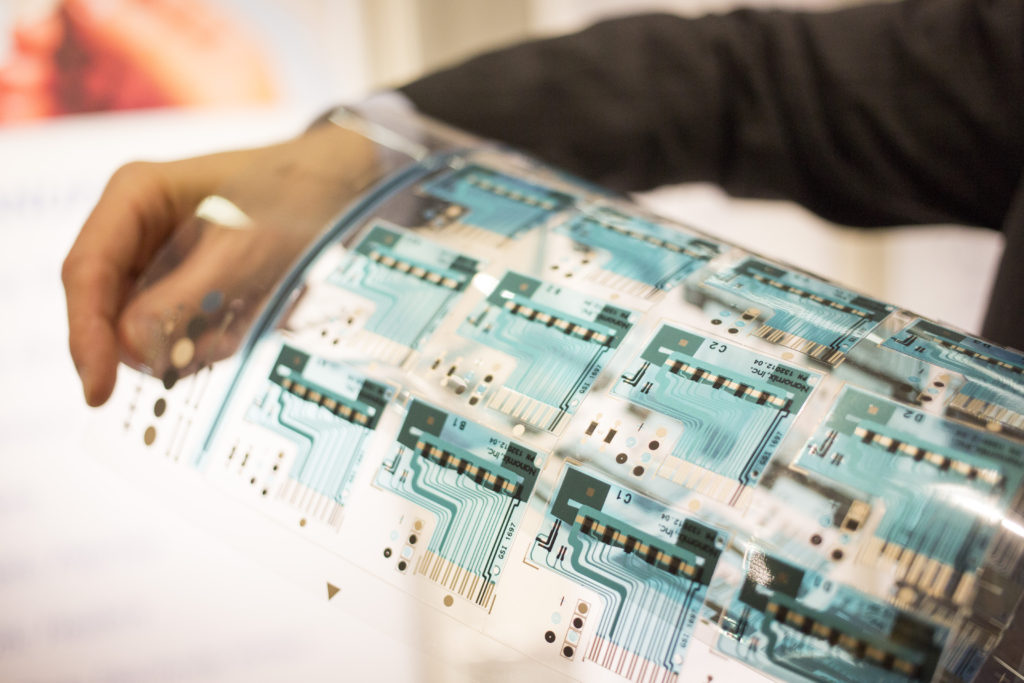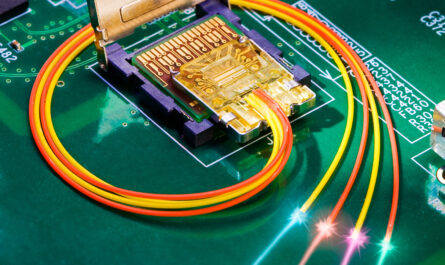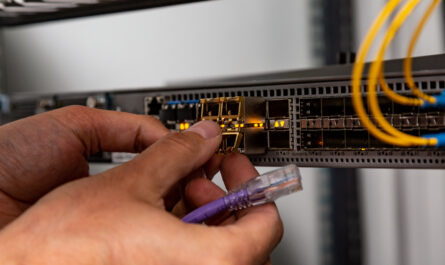Printed Electronics
Printed electronics is an emerging technology which uses different printing techniques such as screen printing, inkjet printing and gravure printing for the manufacturing of electronic devices on various substrates such as plastics, papers and textiles. Printable electronics allow the mass production of electronic circuits in a cost effective way.
History and Development of Printed Electronics
The concept of Printed Electronics dates back to 1950s when American scientist Arthur Fischer developed the idea of photo etching to print electronic circuits onto paper using silver pencil. However, large scale research began in 1990s and 2000s as new conductive inks and improved printing techniques were introduced. Companies started experimenting with printing electronic components such as transistors, sensors and displays on flexible plastic films. Over the years, printed electronics technology matured and now it can print complex circuitry.
Applications of Printed Electronics
Due to their flexibility, disposability and low cost manufacturing options, Printed Electronic devices find applications in several industries:
Displays: Organic light emitting diodes (OLED) displays are highly sought after as they provide brighter and more efficient displays compared to LCDs. Companies use inkjet and screen printing to manufacture OLED display panels on plastic films for smartphones, televisions and digital signage.
Sensors: Screen printing is commonly used to mass produce gas, chemical and biosensors on flexible substrates. Key applications include environmental monitoring, health diagnostics and food quality testing. Wearable health monitors also integrate printed biosensors.
RFID Tags and Sensors: Radio frequency identification tags have a printed antenna that receives and transmits signals for tracking applications. Companies also print RFID sensors for supply chain, industrial and retail use.
Lighting: Flexible and lightweight solid-state lighting panels use printed circuits and phosphors. They are gaining popularity for signage, indoor and outdoor lighting due to their energy efficiency.
Smart Packaging: In addition to traditional barcodes, food and pharmaceutical packaging integrate printed electronics like RFID tags, sensors and electronic displays to improve traceability, provide product information and indicate tampering.
Advantages of Printed Electronics
Owing to the non-vacuum and additive nature of printing processes, printed electronics offers various benefits compared to traditional silicon manufacturing:
Lower costs: Printing technologies enable mass production of electronic devices at high speeds in a single pass. This significantly reduces manufacturing costs compared to processes like photolithography.
Flexibility: Printing conformal circuits on plastic and textile substrates results in flexible electronics that can be bent, folded or shaped as per the product design needs. Rigid silicon chips cannot provide this flexibility.
Large-area fabrication: Printing technologies like inkjet, screen and gravure allow printing circuits over large surfaces quickly and efficiently. This enables large-area applications like displays and solar panels.
Scalability: Printing processes can be easily scaled up to mass produce electronic products. Photolithography requires heavy investments to upgrade wafer sizes which limits scalability.
Low temperature processing: Most printed techniques operate at room temperature and do not require high vacuum or annealing like in silicon manufacturing. This makes printing suitable for heat sensitive materials like plastics.
Challenges in Printed Electronics
Despite the advances in printing processes and functional materials, there are certain technical roadblocks that need to be addressed for wider commercialization of printed electronics:
Resolution and Feature Size: Printing struggles to achieve the sub-micron resolution possible through photolithography. Minimum feature size is typically over 10 μm for printing. Complex circuitry demands higher resolution.
Material Availability: The range of printable semiconducting, dielectric and metallic inks is still limited compared to materials used in traditional manufacturing. New nano-engineered inks need to be developed.
Device Performance and Reliability: Printed electronic devices have lower performance metrics than conventional chips in terms of speed, lifetime and reproducibility. Their reliability over flexing and environmental stresses requires improvement.
Multi-Material Integration: Combining various printed layers of different functional inks while maintaining required registration is challenging. Multi-step, multi-material printing needs synchronization.
Adoption in End Applications: For printed electronics to become mainstream, they must solve clear problems for end users through competitive performance, new form factors and convincing return on investment vis-à-vis silicon. This will drive adoption across industries.
Even though printed electronics technology is still evolving, it offers a promising alternative manufacturing route for low-cost, large-area flexible electronics. Significant research worldwide aims to address existing challenges and commercialize printed systems for different applications. Successful demonstration of printed circuits, sensors and displays incorporated into mass products will accelerate the transition of electronics into the printing paradigm. As printing processes advance and functional materials progress, printed electronics is poised to transform technology landscape in the upcoming years.
*Note:
1. Source: Coherent Market Insights, Public sources, Desk research
2. We have leveraged AI tools to mine information and compile it



